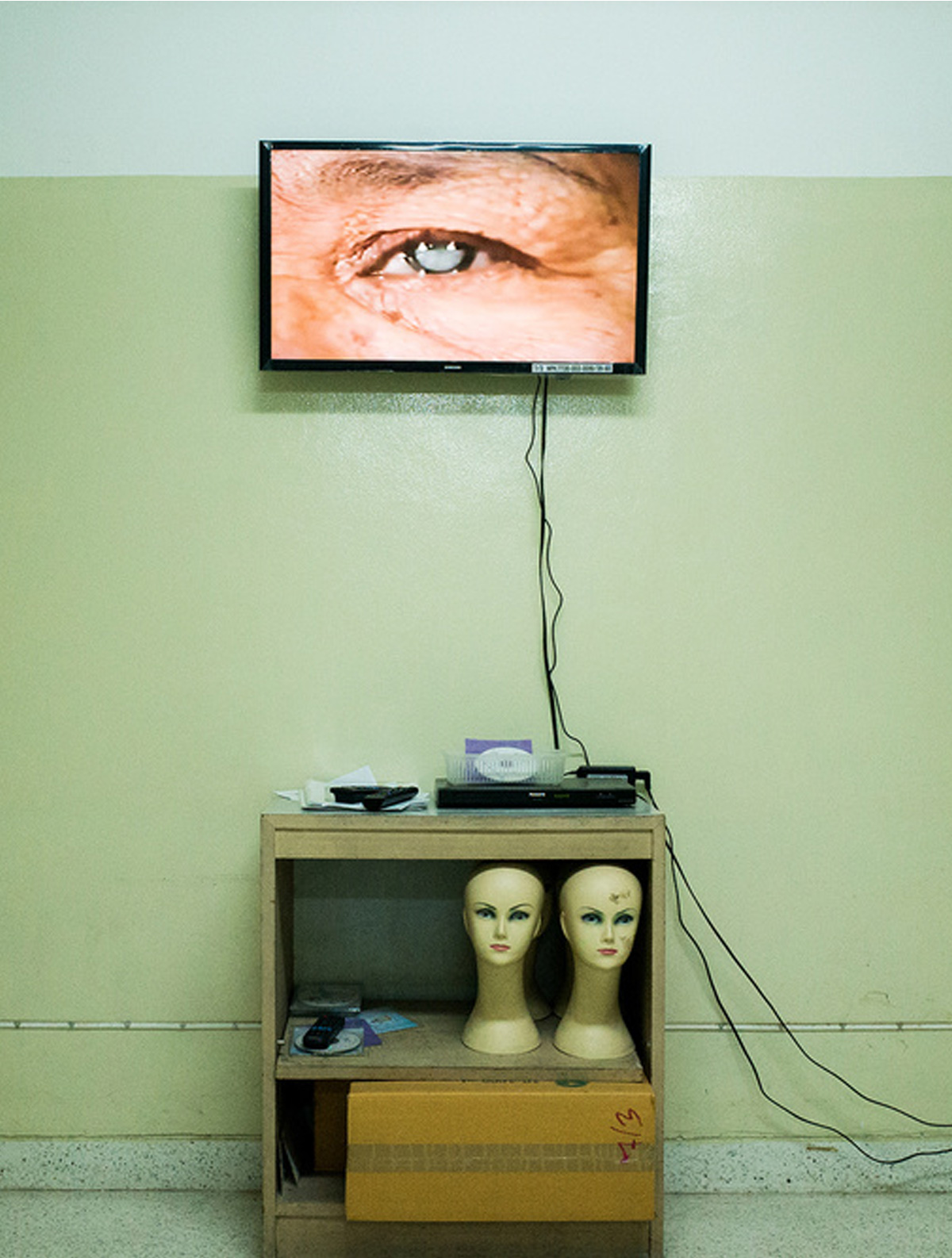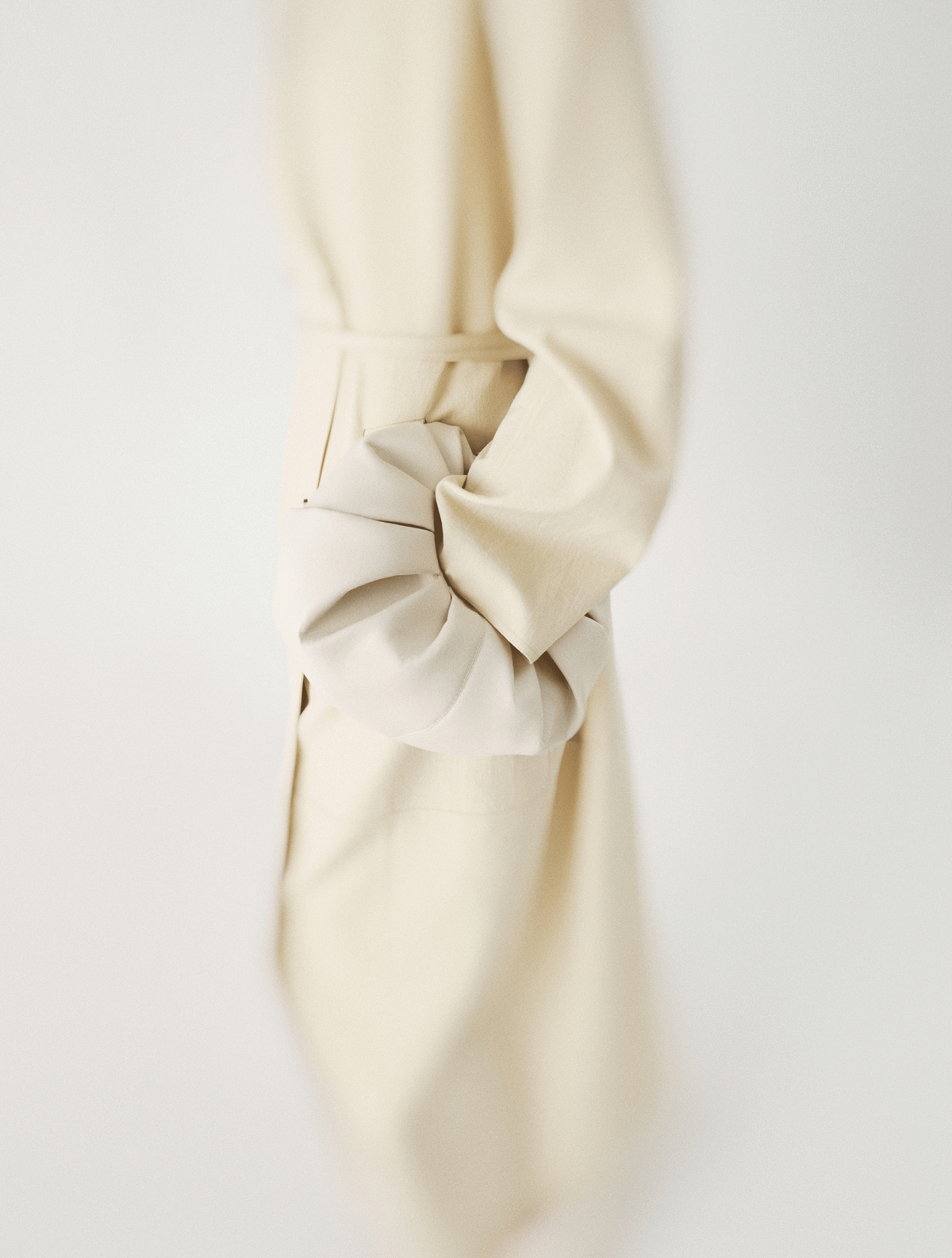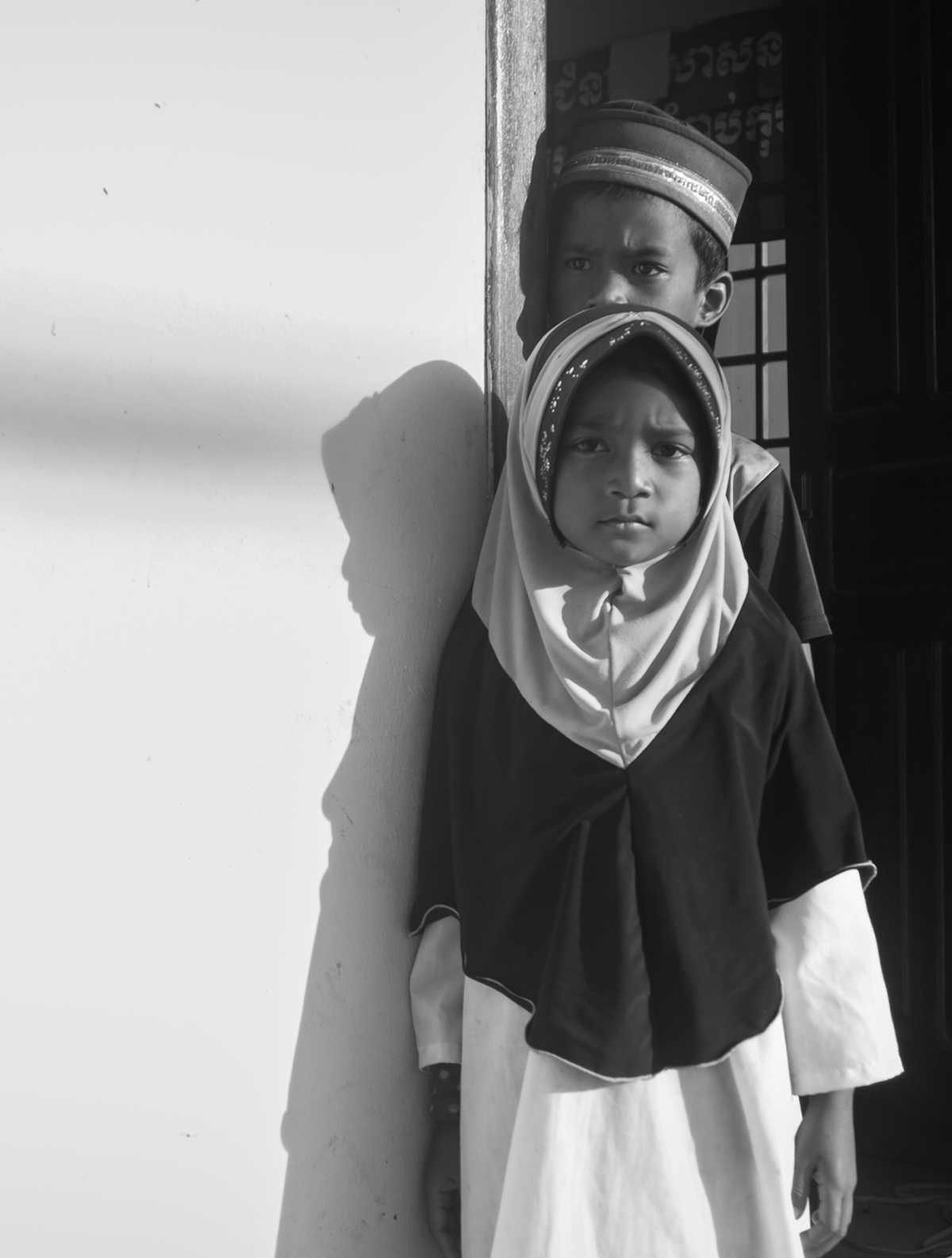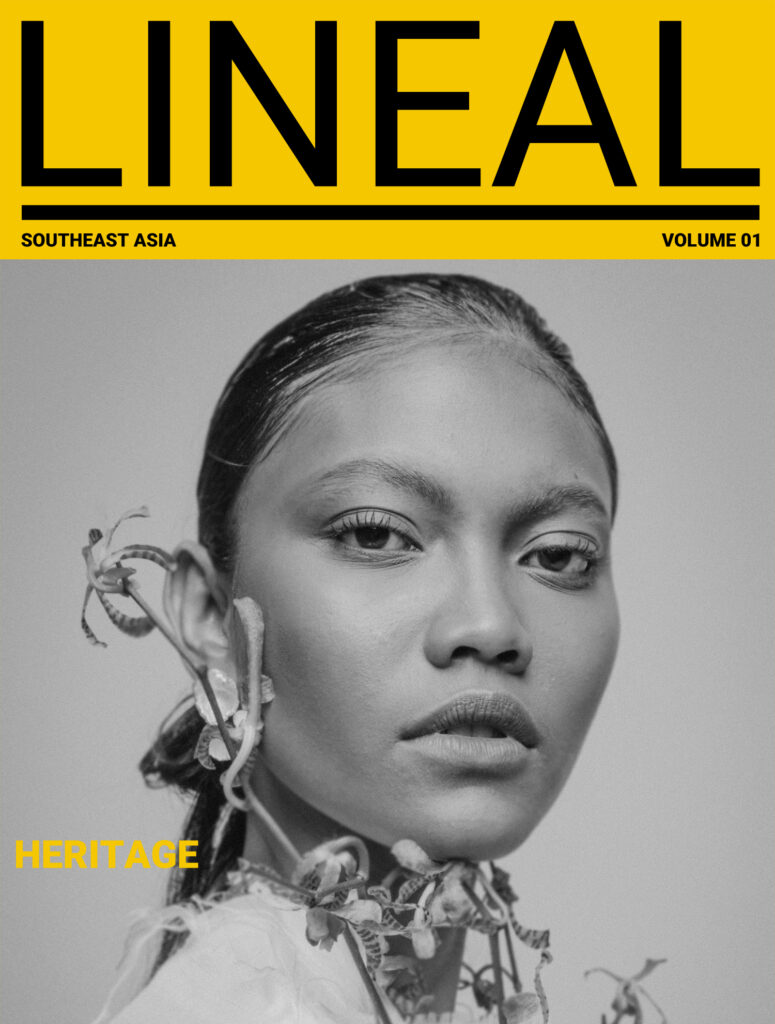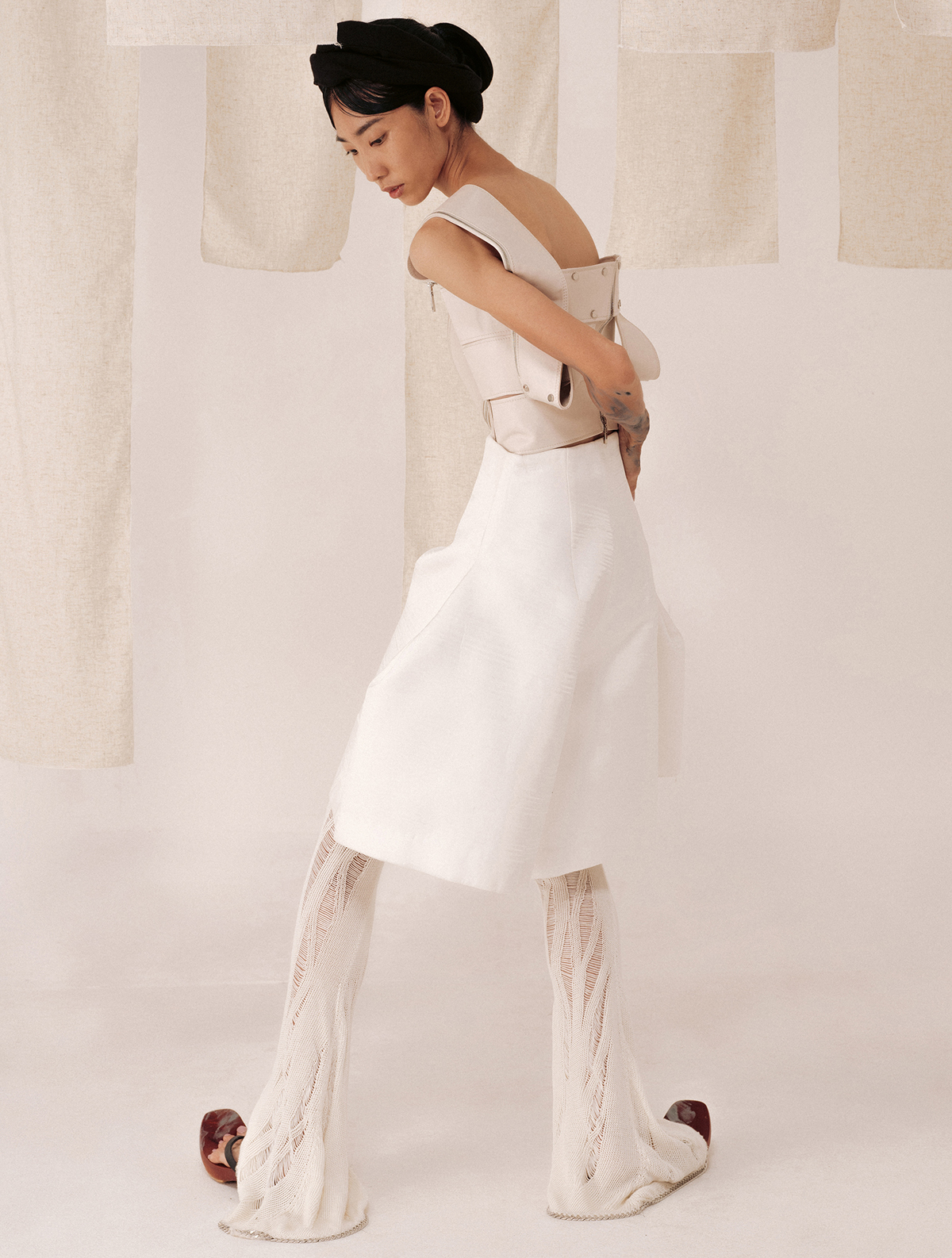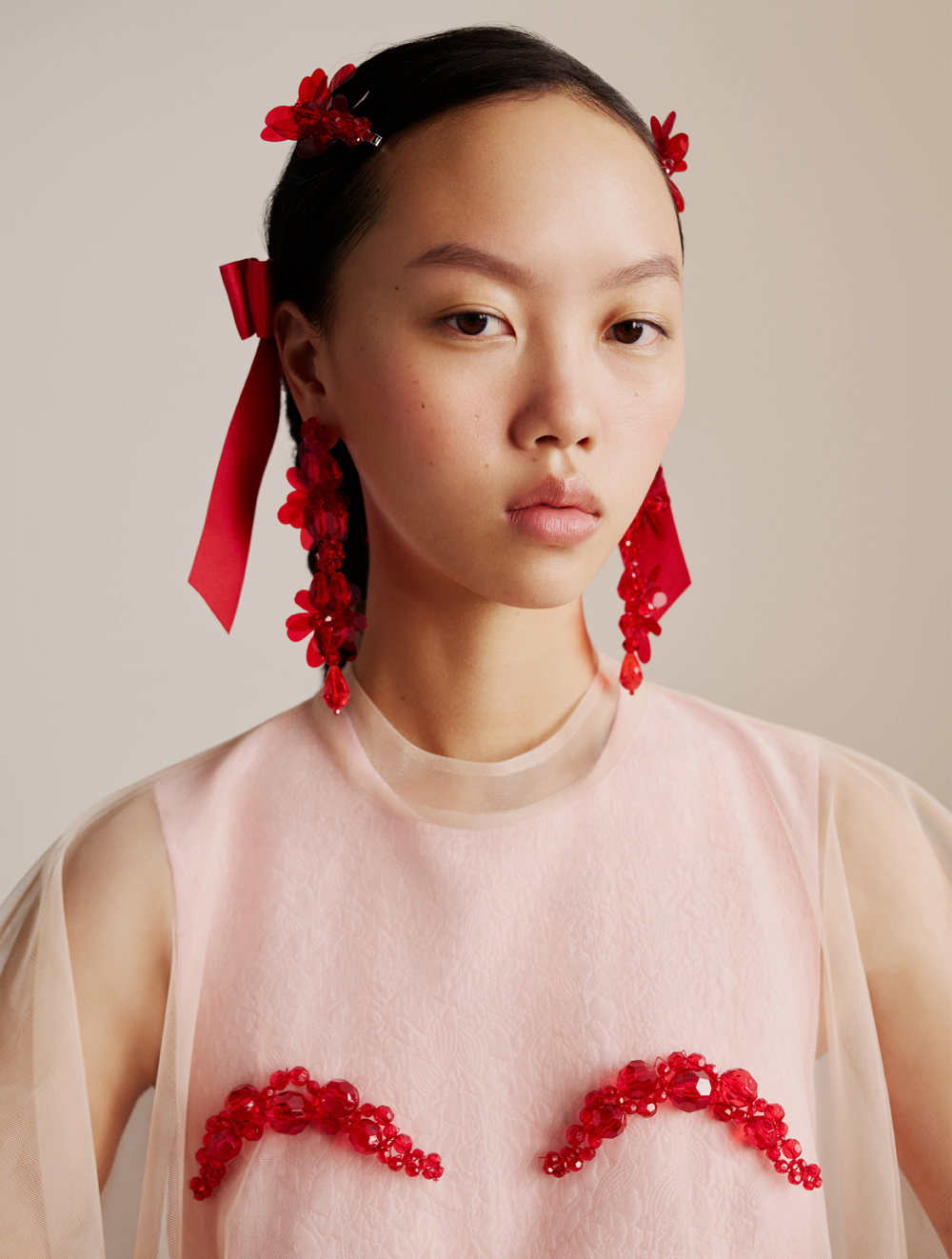Art by Solenn Heussaff
Words by Kerry Tinga
Portrait by Jerick Sanchez
Published on April 16, 2021
Share this :
LINEAL brings the artist and Kerry Tinga together, for a dialogue about Kundiman, pandemic life, and finding hope amidst it all.
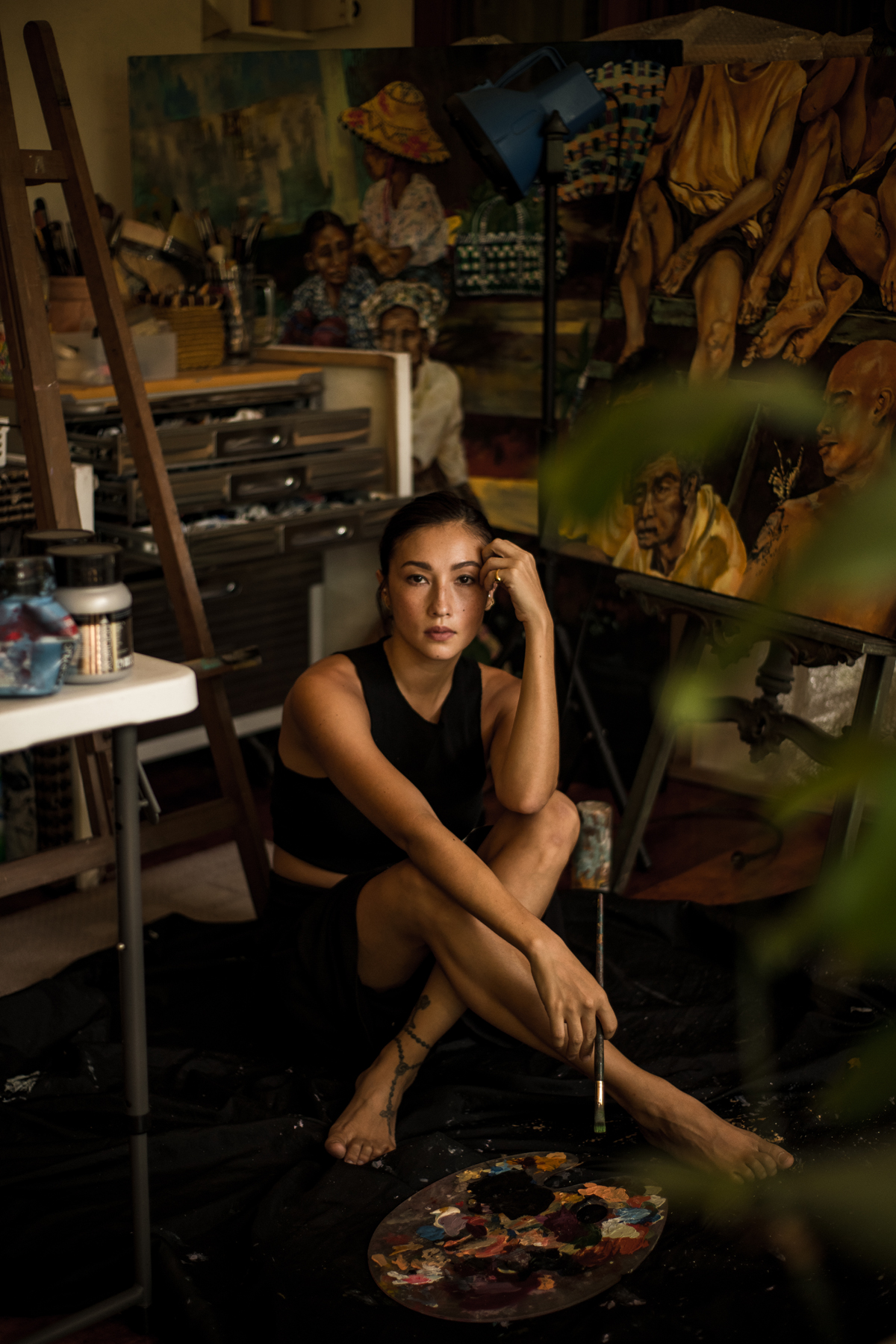
French-Filipino artist Solenn Heussaff looked over the large-scale canvases she had been working on, as well as the dozens of photographs she had taken and took inspiration from. The photographs were scenes from the streets, from the windows of a car stuck in traffic, showing the vulnerable urban population of Metro Manila. Her art has always been grounded in social realism and these paintings were her most detailed yet. As she went back to work, the music she was listening to, Filipino songs that would become some of the titles of her pieces, hummed in her ear and lingered in her soul; the title for her third solo exhibit was perfect: Kundiman.
A kundiman is typically defined as a type of Tagalog native love song used by young men to woo women. But the kundiman is more than just a serenade, and Solenn’s exhibit is more than just a visual love song. She draws on its powerful history, particularly the poem Kundiman written by Filipino propagandist and martyr Jose Rizal.
The large-scale paintings, on view at Modeka Art Gallery and online, show urban settings based on the street photography Solenn has captured over the years, juxtaposed with luscious jungle scenes that give us a glimmer of hope. It is a curious visual blend of photojournalism and self-expression, each canvas the result of months-long labour and reflection. This is her kundiman – her expression of love and appreciation – for the Filipino people who deserve better.
With the imposition of the strictest form of lockdown in Metro Manila, started on March 29, physically viewing the exhibit has been next to impossible. But now more than ever Kundiman and its sober reminder of the harsh realities our countrymen face are a necessary, even if slightly uncomfortable, conversation we should all be engaged in.

Kerry Tinga: First off, congratulations on the exhibit.
Solenn Heussaff: Thank you.
Kerry: It is really interesting, especially since anyone can see it virtually.
Solenn: Well, we have to adapt to the new normal.
Kerry: That’s true. If you don’t mind, we can go straight into the first thing I want to ask.
Solenn: Yes, of course.
Kerry: You lean towards social realism, which is by its very name and nature controversial, calling attention to social conditions the country typically shy away from. What inspires you to depict these themes over others that are less debatable?
Solenn: There was never a sudden realisation that I needed to speak up about these subjects. It is just that I have always been drawn to the people you encounter every day on the street. Sometimes when I am stuck in traffic, I look out from the window of my car and see them working hard in the heat just to feed their families.
When I paint them, I enter a world of imagination: What is this person going through? How does this person feel?
We know they exist but we’ve become so accustomed to seeing them every day. We tend to forget how they feel. I’m not trying to be someone reminding others of what is out there because I think all of us already know. I am a Filipino, I love the Philippines, and I believe the Filipino deserves better. This is my way of bringing out my frustration for the Filipino people through colours.
Kerry: I love the idea that you start with photographs and then transform them through your paintings. Some of the pieces in the exhibit, such as Busilak, are clearly inspired by your photography but also have elements that aren’t exactly literal. What is your process of transforming your photographs into paintings with these deeper layers?
Solenn: Well, as I said, I like to paint people because I can imagine what their life is. So I take several photographs and I imagine their happiness, and I imagine their anger. Busilak, for example, has around three or four photos in one.
The painting looks like three mothers and their children. There were actually 10 of them in Poblacion. I wanted to depict where they were sleeping on, the streets. Behind them is a saying taken from a picture I shot around four years ago – “You citizens are in charge of your own wellbeing in your own surroundings. If you end up throwing things into your surroundings, it will throw things back at us.” Those are the two I started with.
And then I painted it. When I saw it, it felt incomplete and I didn’t like it. Something was lacking. I left it alone for two or three years until I started working on this exhibit.
I was speaking to [our curator] Teresa Herrera and she asked if I had a title for it. I didn’t. She suggested to call it busilak, which means immaculate. And we were talking about how a lot of women in the Philippines are left alone to raise their children, and a lot of women are left without the choice of whether they want to get pregnant or not. When it comes to contraception in the Philippines, it’s not something many of us like to talk about or advocate for. When she said “busilak” I just thought, “Oh my gosh, yes.”
If you look at the painting, there are three more women at the top without faces. They represent those who judge you for the decisions you make as a female or as a parent, or society, in general, telling you the [supposed] right things to do. There are individuals who think they know better even though, at the end of the day, your business is your business. I wanted to show that in the painting and that is how it all came together.
Many who have seen the exhibit have brought up that Busilak is their favourite even though it was one of the paintings I originally didn’t know what to do with. Also, when I saw those ladies, I actually hung out with them as I was doing a photoshoot in the area. They followed us around and wanted to see how it happened. I got to talk with them and connect with them, which is why I found it difficult to paint. I knew more than I should have.


Kerry: Is that something you typically do, talk to the subjects you photograph, or do you try to stay at a distance so that you are free to create something?
Solenn: I take photos on the go, from the car, or when I am on film location. It’s not that I don’t want to talk to them; it’s just that usually I don’t have the opportunity to. But if there is, then I am always happy to listen. Another work that was supposed to be part of the exhibit is The Province with portraits of men cutting coconuts. I spoke to them. Again, it was so hard for me to finish those paintings because I feel like I wouldn’t be able to do justice to their lives or the things they feel. That is why I prefer to combine different stories into one painting.
Kerry: So beyond your photographs and your art, is there anything you are involved in to try to better understand their lives?
Solenn: I have been working a lot with the Kalipay Foundation, which helps street children in Negros Occidental. My last exhibit was about street children and so I gave back through them. For this exhibit, I am also giving some proceeds to Kalipay and the OSEC, which combats online sexual abuse of children. I have also reached out to a friend to find a smaller foundation that assists in the education of street children.
Kerry: Going off of that, I found it quite interesting that you titled the exhibit Kundiman because it is almost ironic that a lot of the communities depicted in your artwork are very vulnerable and do not receive enough love, and are even judged by those who do not understand them well, like in Busilak. I understand that this exhibit is your way of showing them some love. So what sort of love do you hope the viewers of your exhibit give them, what do you hope we learn from this?
Solenn: Well, I posted a photo of my exhibit that received a lot of bashing online. Some said it was “poverty porn” because it wasn’t exactly a clean background. But it wasn’t the slums; it was just a typical street in Manila. I wanted to speak up about the environment and what we are doing to it, which is why there is the painting of nature that looks like it is dissolving into the ground.
But I got a lot of flak. Some of them have good critical judgment and I understand where they came from. Others, however, were asking why I needed to show it since we all know it is there. What I don’t understand is why it is so hard to talk about our communities. Why can’t we admit that this is what most of the streets in the country look like? We have, of course, beautiful beaches and a lot of beautiful areas around the Philippines. And there are places like BGC that are very curated. But the reality is that there are all these little streets where life happens, where they live, and yet it is taboo to talk about them.
The typical kundiman is a love song that Filipinos serenade to women. But the Kundiman of Jose Rizal is a poem to free the Tagalog race and the Filipino people because he knew that there is hope for a better tomorrow. The exhibit is showing all of that, the day-to-day life of most Filipinos, with hope.
There is a flow in the gallery. It starts with luscious greeneries, monkeys, and jungles. And then as it progresses, you see the pollution with trash on the floor and paintings melting into the ground, which is the reality of what is around us. It ends in a domestic setting with a couch that shows the outdoors with lush greens we have in the Philippines. It shows a sense of hope that if we work together we will get the change we deserve. But social transformation has to be a conscious effort done with active collaboration.
I am a little sad, I’ll be honest. I have worked on this whole exhibit for three years. I had these massive plans for an experiential art walk, plus I feel that my work has become more detailed. At first, I didn’t want to push through because, to be quite honest, there is no magic in looking at art online. It was kind of hard to push forward until Modeka and Teresa told me that we shouldn’t lose hope, we still need to create and share even if we are in this pandemic.
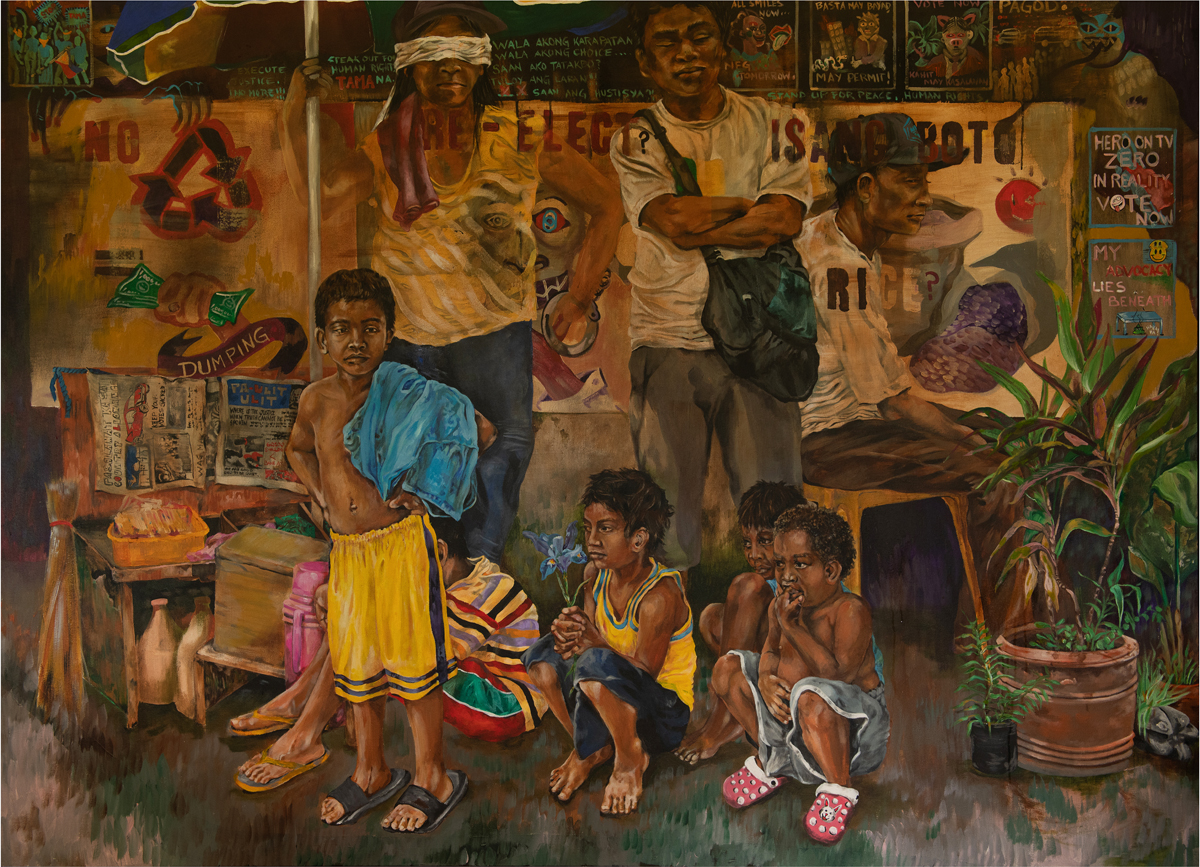
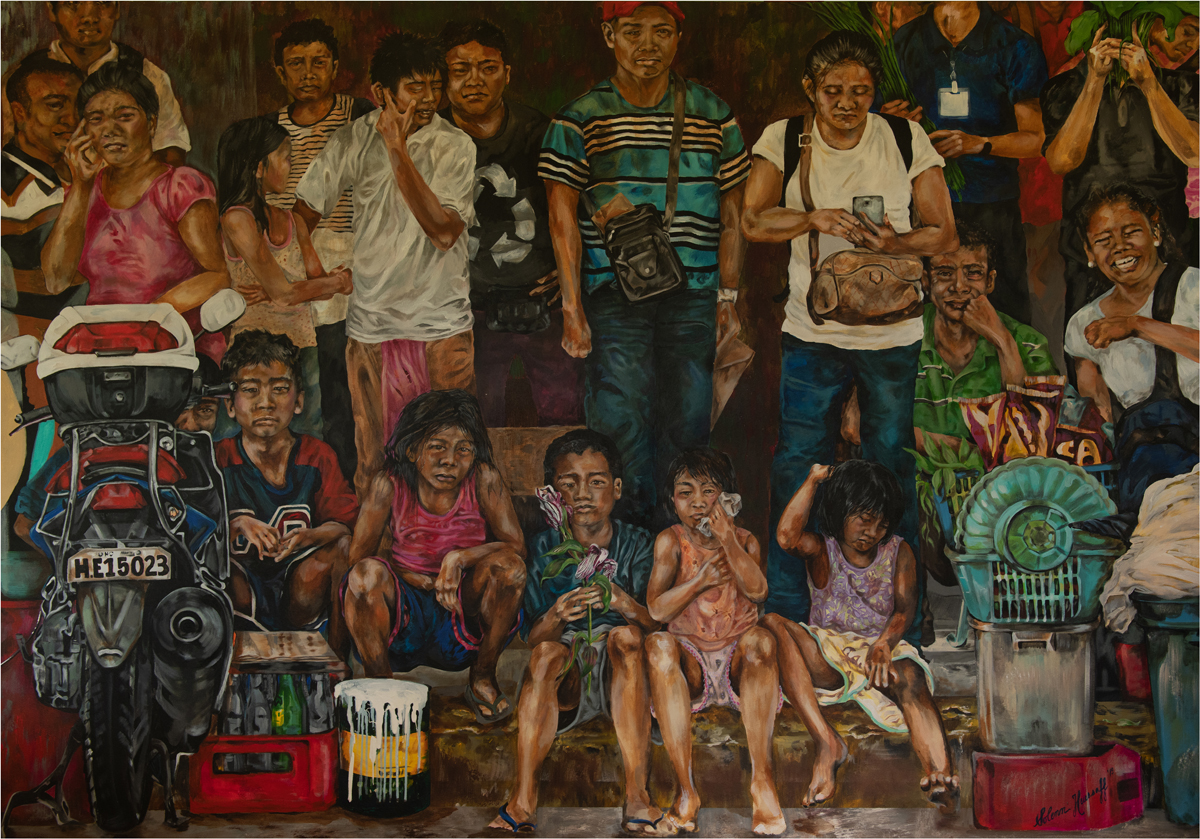
Kerry: Are there plans to put up the exhibit again once things relax?
Solenn: All the paintings are going to their new owners after this exhibit is done. I would have to work on a new one, but it will be in a very different direction, for sure. Every time I have an exhibit, since it is every two or three years, I make sure that it has a totally different direction, different look, but still with people.
We’ll also see what happens because, to be honest, I have no drive whatsoever to paint right now. No inspiration. The photos I take are from when I am on the go and when I’m meeting others. Now that we’re just at home, I find it very hard to be motivated. That is the challenge of this year that we all have to push through.
Kerry: I was actually going to ask whether you found it more difficult or easier to paint this past year. So you’re saying you found it harder to find motivation?
Solenn: Definitely harder. It is also because I have a child. Before, I would paint until who knows what time. When I didn’t have work, I would be in the painting studio from morning till night. And then I got pregnant and it was a little bit harder because of the smell of paint and because I just wanted to rest. After I gave birth I was full-on parenting; even up to now it is very hard for me to find the time to paint. I can’t just paint while she is taking a nap. I need to be in it for something like six hours. I don’t work just 20 minutes here and 30 minutes there.
Deciding to push through with this exhibit motivated me to finish the paintings. It forced me to go through my old photos and research online. It was nice to feel that way again. But now it is hard for me to be like, “Well okay, let’s go to the next idea and the next exhibit.” I know it will come back to me. Sometimes I don’t paint for a year and sometimes I paint relentlessly every day.
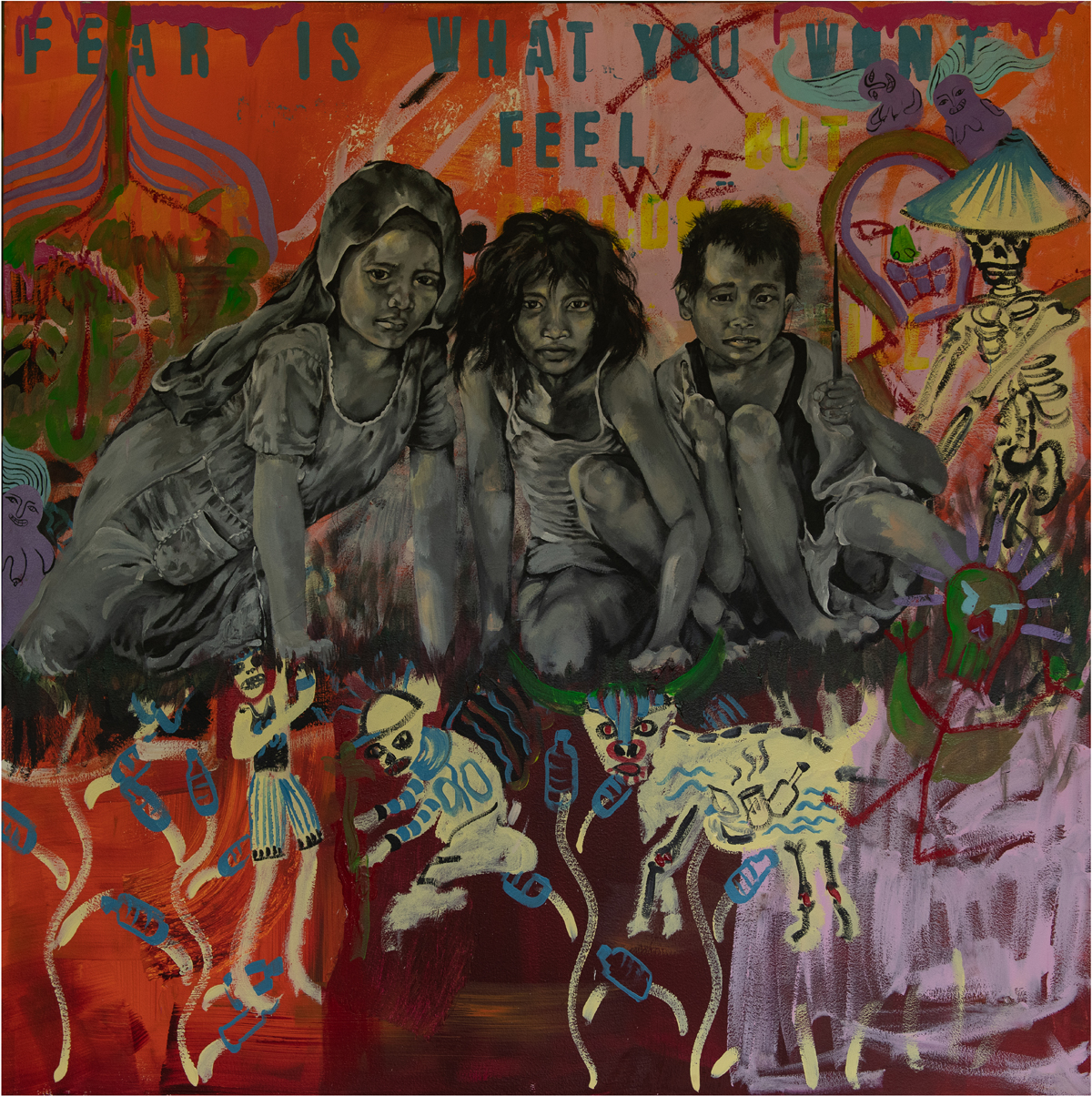
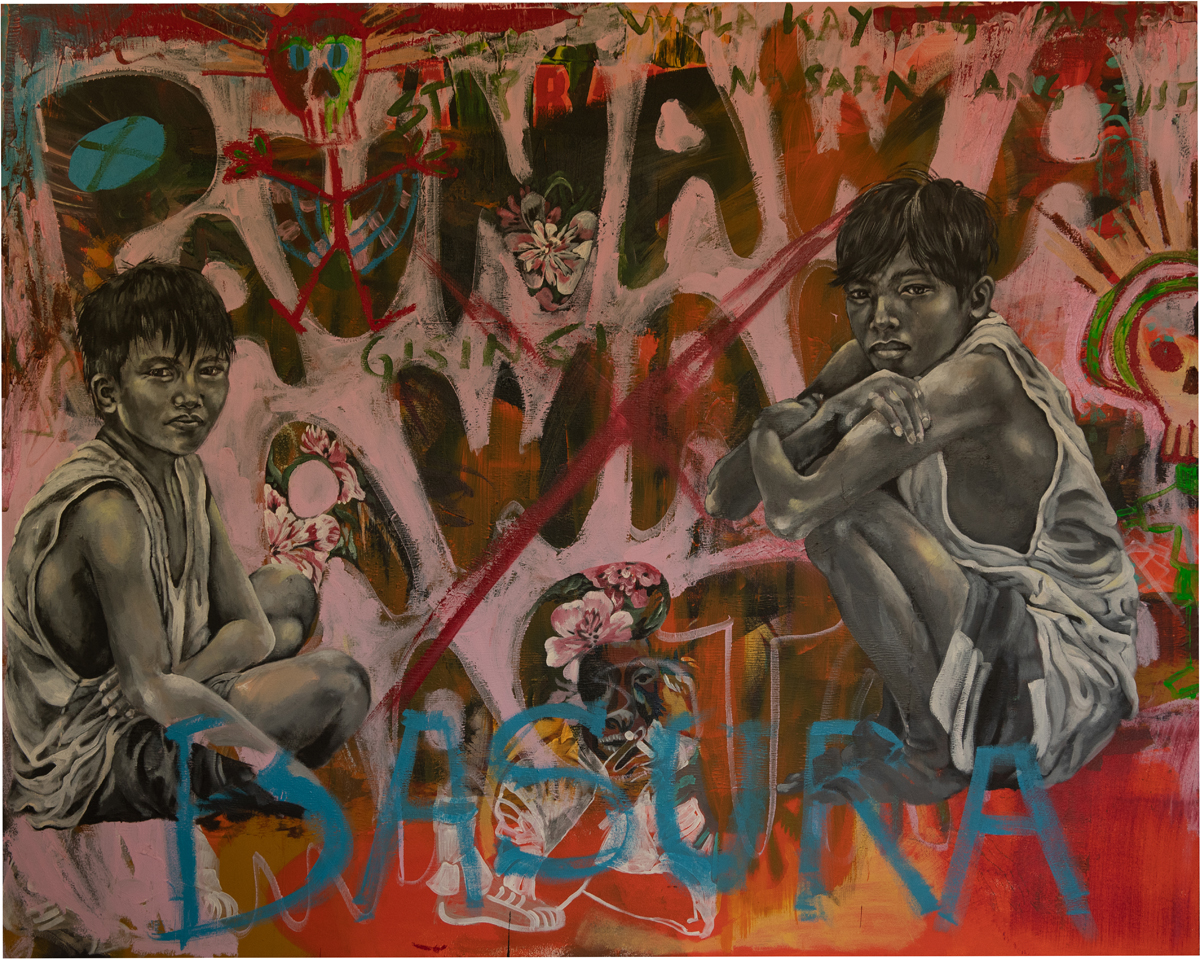
Kerry: On the pandemic, is there anything that you have been reflecting on and has been manifested in your work?
Solenn: If you look at the whole collection, there is a lot of claustrophobia. There are also many colours, to show hope, but they are dark colours. There are a lot of subjects and noise. Even though I started painting for the exhibit in 2018, I ended up adding elements over the past year. So you see those details such as the graffiti added in.
Kerry: I love that you keep mentioning that even in your most cramped painting, you always add these colours to show a tinge of hope. And then in your exhibit, you also have these very luscious jungle scenes that point towards a better tomorrow. How do you find hope and optimism, especially when you are dealing with these dark themes in social realism?
Solenn: I think that is because I am a mom now. I gave birth to her a year ago and I only want the best for her. I want her to grow up and see all the things I have seen, to see all the beautiful places in the world and in the Philippines. I’m very busy with her: teaching her things, reading stories to her, and showing her what is beyond our house when we were able to travel. She, my daughter, is where I find my hope. If we are still able to bring life into this world through our children then we ought to have hope that there is more to life out there for them.
Kerry: Thank you, I think that is really beautiful. I just have one last question about your artistry in general. Since you are a woman of many talents surrounding art, from acting to painting and such, what do you think it means to be an artist in the Philippines today?
Solenn: I don’t think an artist is limited to painting. It could be food, or it could be standing in front of a massive crowd and communicating a certain story or an opinion. I believe art is about being able to share something that you know and then giving a piece of it to everyone, so that we can find that commonality we all share. When it comes to my paintings, I have a certain idea of what I want to show, but if you look at it you will have a certain way of reading into it. And then we can start a conversation and learn from each other. I think that is what is beautiful about art: that it is subjective, that there is always extra space to learn and to grow. Wait, did I answer the question?
Kerry: Yes. Yes, I think you did. Thank you so much for taking the time to talk to me, and congratulations again on the exhibit.

Kundiman is on view at the Modeka Art Gallery, 20A La Fuerza Plaza, Chino Roces Ave., Makati from March 26 to April 24, and through a virtual experience on www.modeka.space.
Editor’s note: The conversation has been edited for clarity and brevity.
Share this :
Follow us :
ADVERTISEMENT
LATEST ARTICLE
Krerkburin Kernburi’s SurrealLand! Is A Series Of Extraordinary Photos Of Ordinary Days Of Our Lives
In Conversation: Lam Gia Khang Promotes Balance and Stillness Through Minimal Design
“Cham Community Project” – A Redemptive Celebration Of Muslim Community In Siem Reap
SIMILAR ARTICLES



